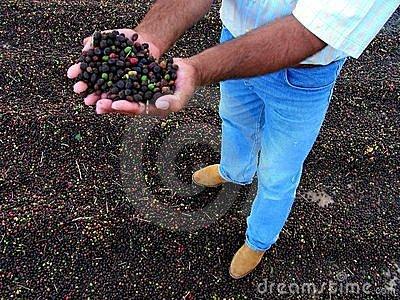The History of Coffee in Yunnan when did China begin to grow coffee beans
When did China start growing coffee beans?
During the Republic of China, the Catholic Church still sent Father Xu, Father Gu and Father Duan to Binchuan. These missionaries taught the villagers to read the Bible, set up a church primary school and brought basketball. The missionaries, though different, loved coffee, and they continued to grow and expand the coffee tree's territory.
But Zhukula's coffee is only for priests to drink, and local villagers, they like coffee with priests, until today, this remote southwest China countryside, home for guests to drink, is still coffee, they will cook in their own large iron pot roast, then grind coffee powder on the grinding stone mill, finally like Turkish coffee, wrapped in gauze in the teapot boil.
Zhugula's Yi name is "Ruokelai," perhaps its pronunciation is very similar to French (Chocolat, chocolate), so Tian Deneng gave it a French village name. China's first coffee, planted by two cultures inadvertently meeting, is just a small detail of China's pull into the world system in the turbulent 20th century.
This is how isolated villages become associated with coffee. The outside world, the coffee memories of Yunnan cities, is written in another way.
Just a year after Tian Deneng planted coffee, his French countrymen opened Yunnan's first coffee bar in Mengzi. In 1887, after the end of the Sino-French War, the Qing government signed a contract with France and was forced to open Yunnan Mengzi as a treaty port. It was the earliest treaty port in Yunnan and soon attracted foreign businessmen. Foreign companies from France, Britain, the United States, Japan, Italy, Germany and Greece landed here one after another, even including the famous American Mobil Company, British American Tobacco Company and Paris Department Store at that time.

Important Notice :
前街咖啡 FrontStreet Coffee has moved to new addredd:
FrontStreet Coffee Address: 315,Donghua East Road,GuangZhou
Tel:020 38364473
- Prev

The characteristics and stories of Panamanian Cupid Coffee beans that taste like tea
A brief introduction to the characteristics of Panamanian Cupid coffee beans that taste full of tea Panama has one of the highest volcanoes in Central America: Mount Baru. The Baru volcano has an altitude of more than 3474 meters, and the surrounding land is nutritious and balanced, providing sufficient conditions for the sowing and cultivation of Panamanian coffee. The cold air stream converges and flows above 2262 meters in the Central Mountains.
- Next

A brief introduction to the flavor characteristics of Yejia coffee beans, grinding degree and taste production area
Brief introduction of Yega Coffee Bean Flavor characteristics, Grinding degree, Taste production area [raw bean treatment]: water washing refining method [special point]: coffee tree originated in Ethiopia (Ethiopia), it was originally a wild plant here, and the name coffee comes from the Ethiopian town of Kaffa. In fact, many coffee trees in Ethiopia are still wild plants, this kind of coffee
Related
- Detailed explanation of Jadeite planting Land in Panamanian Jadeite Manor introduction to the grading system of Jadeite competitive bidding, Red bid, Green bid and Rose Summer
- Story of Coffee planting in Brenka region of Costa Rica Stonehenge Manor anaerobic heavy honey treatment of flavor mouth
- What's on the barrel of Blue Mountain Coffee beans?
- Can American coffee also pull flowers? How to use hot American style to pull out a good-looking pattern?
- Can you make a cold extract with coffee beans? What is the right proportion for cold-extracted coffee formula?
- Indonesian PWN Gold Mandrine Coffee Origin Features Flavor How to Chong? Mandolin coffee is American.
- A brief introduction to the flavor characteristics of Brazilian yellow bourbon coffee beans
- What is the effect of different water quality on the flavor of cold-extracted coffee? What kind of water is best for brewing coffee?
- Why do you think of Rose Summer whenever you mention Panamanian coffee?
- Introduction to the characteristics of authentic blue mountain coffee bean producing areas? What is the CIB Coffee Authority in Jamaica?

